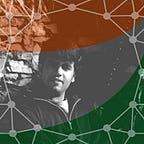I hadn’t played the earlier installments of the Witcher series but CD Projekt Red’s latest installment blew me away. Sure the graphics effects are spectacular and there are very well designed unique picturescapes (e.g., a shipwreck on a snowy mountaintop) all through the game. It feels a lot like The Hobbit series on a smaller scale and more focussed on the finer details of the witcher’s home world.
The characteristic that makes this game truly stand apart for me is character development. At this point I have only finished the second visit to Kaer Morhen (the witcher home fortress). During my playthroughs, it was clear that you can choose to be three different versions of the main point-of-view character, the witcher Geralt of Rivia: (i) staunch idealist: who explores each scenario by following a strict sense of what’s right (ii) shady individual: you can choose to trick people occassionally (e.g., in fight clubs promise people that you’ll throw fights and then knock them out having throwing them off guard) or (iii) regular human being: make choices hoping for the greater good based on the information at hand. Now the game doesn’t pay off for any particular version of the witcher. Payoffs in the game could be either in the form of money (crowns) or experience points (more valuable as points help you climb character levels). In some cases being in a shady mindset might help. For instance, I regret exploring the contract on the search for Niellen’s wife to the end where you have to end up killing the werewolf. It might have been easier to just take the money Niellen’s sister-in-law offered early on and leave them be (and it’s pretty clear what had befallen Niellen’s wife by then). But being the version (iii) of the witcher might be the best choice to unlock all possible relevant missions around you in the right order in the game. For instance when Geralt explores Kaer Morhen with witcher Lambert they hear a child scream. Despite both the witchers’ well-placed inference of its origin if they feel obligated to explore, they only end up being ambushed by some foglets. Character development is a great strength of this game. Unlike most other open-world video games, most of the characters you encounter on quests are directly related to the main storyline so if you try to streamline your walkthrough by focussing too much on the main quests, you’ll fail quite a few secondary quests. The game’s three female sorceresses for example are in stark contrast to each other. There’s Keira Metz in Velen who is less powerful than the other two and is content being the local village witch but is also the least complicated of the three. She provides Geralt with some real firepower early on in the mission (recipes and herbs for potions and oils, magic lamp) and sure it doesn’t hurt that she melodiously exclaims “Geralt!” every time the witcher goes to see her. Then there’s Triss Merigold in Novigrad who has fallen afoul of the local authorities in the big city and survives under protection of the local underworld and tries to lead the helpless magic folk in the city. Finally there’s Yennifer, the sorceress to the king who travels across the globe under the king’s protection free to wield her magic the way she pleases. She’s the most powerful of the three and a lust for power is clearly visible in her persona.
A medley of monster varieties, complex fight sequences (with weapons and rudimentary magic), the finer details of the personalities populating the game and of course the awesome Skellige Isles makes the Witcher 3 Wild Hunt a great role-playing game and it really does deserve the 2015 game of the year award. Unfortunately despite being one of the two point-of-view characters in the game, the king’s daughter Ciri is not a very interesting character study.
